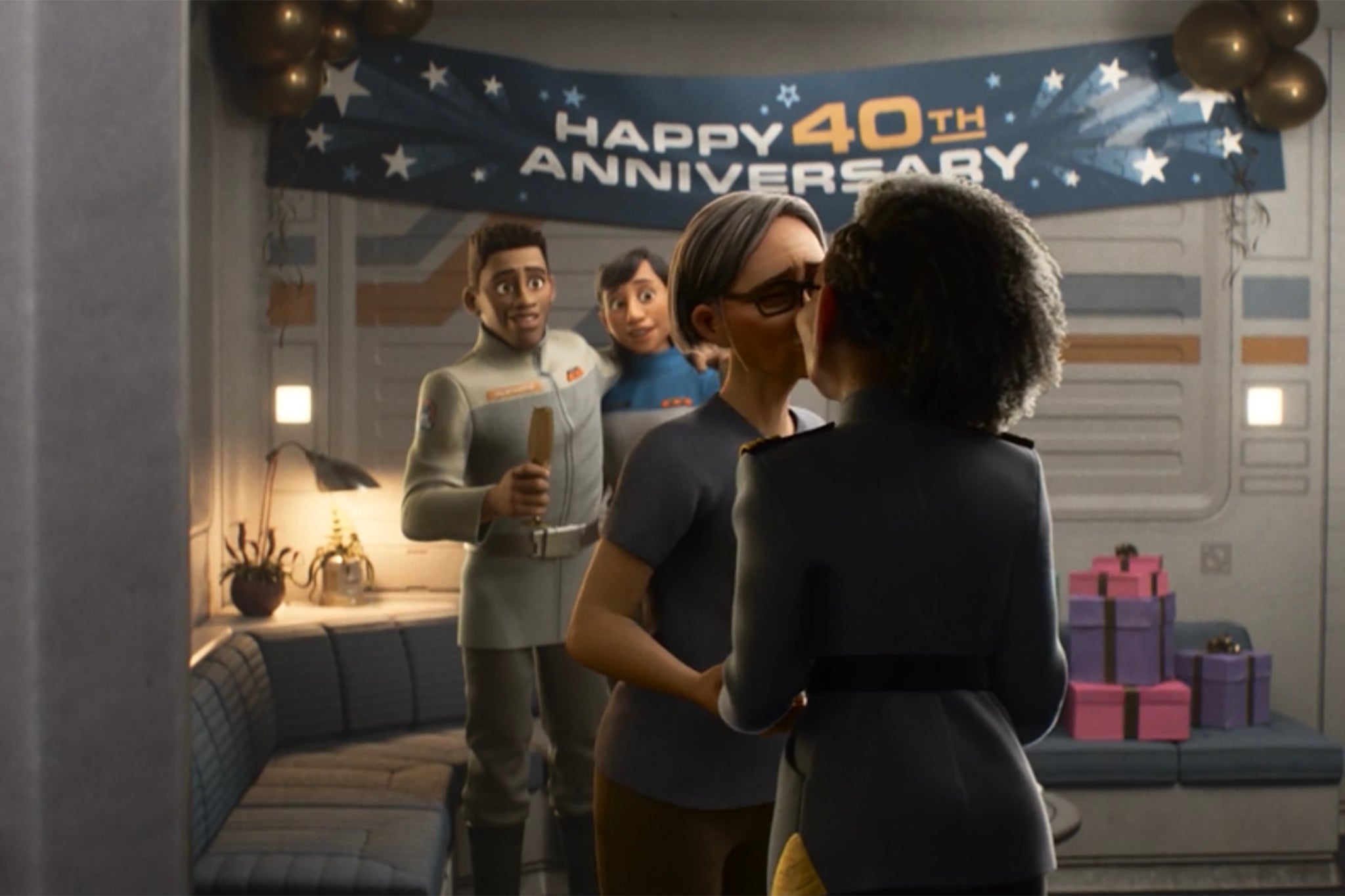It’s been three years and two days since Lightyear was released in cinemas – and you’d be forgiven for forgetting it ever existed. Pixar’s strange, ill-conceived Toy Story offshoot – focusing on a human version of Tim Allen’s plastic toy astronaut – was an unprecedented flop for the famed animation studio. The previous two Toy Story films made more than $1bn apiece; Lightyear made just $226m, failing to turn a profit. Critics mustered a collective shrug. But while no one could reasonably argue that Lightyear made an impact artistically, it has, in an odd and symbolic way, endured – drifting around the orbit of our culture like a derelict satellite. Just ask Snoop Dogg.
During an appearance on the It’s Giving podcast last week, the 53-year-old rapper and food delivery app jingle-maker claimed that Lightyear had left him “scared to go to the movies” with his grandchildren, thanks to a scene that depicts two female characters in a same-sex relationship. Back when Lightyear was first released, the scene in question drew a kneejerk backlash from the political right, and caused Lightyear to be banned in countries such as Egypt, Iraq, and Saudi Arabia. Snoop Dogg claimed that the film had caused his grandchild to ask questions about the queer characters on screen, and their ability to have a child together – questions he suggests he was unwilling or unable to answer. “It f***ed me up,” he said. “These are kids. We have to show that at this age?”
It’s not worth wasting much time picking apart the homophobia underpinning Snoop Dogg’s comments – bigotry that’s as transparent as it is unoriginal. But it might be worth looking at what has made Lightyear – a fundamentally innocuous children’s movie – such an incendiary, politicised object. Kids’ films have, in recent years, often become lightning rods for reactionary discourse: movies such as the live-action Disney remakes Snow White (2025) and The Little Mermaid (2023), or the Pixar films Elemental (2023) and Turning Red (2022), have all been subjected to protracted right-wing backlashes.
What makes the issue all the more farcical is the fact that Lightyear is about as queer as an episode of Soccer AM. The lesbian love story is given such short shrift that only one of the women in question, Uzo Aduba’s Alisha Hawthorne, actually has any lines. Like so many of Disney’s self-vaunted representational milestones – the grieving homosexual who is glimpsed at the start of Avengers: Endgame; the “exclusively gay moment” of their live-action Beauty and the Beast; the sapphic kiss in Star Wars: The Rise of Skywalker that lasted for all of a second – Lightyear treats its scandalising same-sex relationship with the utmost brevity. One mistimed toilet break and you would be unaware that there was any cause for controversy whatsoever.
Lightyear’s failure is sometimes held up as an example of the public’s resistance to inclusive storytelling – “go woke, go broke”, as the saying goes. But this is a convenient fiction. There are other, more prosaic and altogether more credible reasons why Lightyear failed to connect with audiences. The four core Toy Story films featured a clear, immediately parsable premise – what if toys came to life? Lightyear had a nebulous and confusing one. Chris Evans, who voices Buzz Lightyear, attempted to explain the premise beforehand, writing: “Just to be clear, this isn’t Buzz Lightyear the toy. This is the origin story of the human Buzz Lightyear that the toy is based on.” OK then.
Then there’s the casting. Lightyear didn’t just recast the role of Buzz, voiced in the four original Toy Story films by Allen, but also completely left out Tom Hanks, one of the biggest box office draws around and an undeniable factor in the franchise’s longstanding popularity. Add this to the shaky state of the cinema industry at the time of its post-Covid release and it’s clear there were myriad reasons why Lightyear failed to achieve liftoff.

For Disney, and indeed most of Hollywood, the film’s failure represents an inconvenient truth: that the industry’s obsession with franchise filmmaking is a fallible, perhaps even doomed, ideology. When talking points such as Lightyear’s – let’s face it, really all too meagre – queer representation resurface, as they have this week, it provides an easy alternative to the reality of the situation. The reality is that audiences cannot be relied upon to show up and consume whatever recognisable IP is brandished in their direction. That maybe audiences are simply demanding better, more original films. This is the only lesson worth taking from Lightyear – whether Disney will learn it is another matter.







